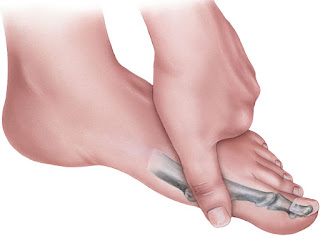Understanding Achilles Tendinitis: Causes, Symptoms, and Treatment | Dakota Foot & Ankle Clinic
Do you find yourself experiencing persistent pain in the back of your heel? Does it hinder your daily activities or make walking uncomfortable? If so, you might be grappling with Achilles tendinitis. This condition involves the inflammation of the Achilles tendon, a crucial structure that connects your calf muscles to your heel bone. Understanding Achilles tendinitis, its causes, symptoms, and treatment options is essential for effective management and recovery.
What is Achilles Tendinitis?
The Achilles tendon is one of the largest and strongest tendons in the human body, enabling activities like walking, running, and jumping. Achilles tendinitis occurs when this tendon becomes inflamed due to overuse or strain. It commonly affects athletes, particularly runners, but can also occur in individuals with sudden increases in physical activity or those who wear improper footwear.
Causes of Achilles Tendinitis
Several factors can contribute to the development of Achilles tendinitis:
- Overuse: Engaging in repetitive activities that strain the Achilles tendon, such as running or jumping, without proper rest and recovery.
- Poor Footwear: Wearing shoes that lack proper support or cushioning can place excessive strain on the Achilles tendon.
- Tight Muscles: Tight calf muscles can increase tension on the Achilles tendon, making it more prone to injury.
- Biomechanical Issues: Anatomical factors like flat feet or high arches can alter the mechanics of the foot and increase the risk of Achilles tendinitis.
- Sudden Intensity: Rapidly increasing the intensity or duration of physical activity, especially for sedentary individuals, can overload the Achilles tendon.
Symptoms of Achilles Tendinitis
The hallmark symptom of Achilles tendinitis is pain and stiffness in the back of the heel, particularly after physical activity or prolonged periods of rest. Other common symptoms include:
- Swelling: The area around the Achilles tendon may become swollen and tender to the touch.
- Stiffness: Reduced flexibility in the ankle, especially in the morning or after periods of inactivity.
- Warmth and Redness: Inflammation of the tendon may cause the skin over the affected area to appear warm and reddened.
Treatment Options
Managing Achilles tendinitis typically involves a combination of conservative measures aimed at reducing pain and inflammation while promoting healing. These may include:
- Rest: Avoid activities that exacerbate pain and give the tendon time to heal.
- Ice Therapy: Applying ice packs to the affected area can help reduce swelling and alleviate pain.
- Stretching and Strengthening Exercises: Gentle stretching and strengthening exercises for the calf muscles can improve flexibility and reduce strain on the Achilles tendon.
- Orthotic Inserts: Using orthotic inserts or supportive footwear can provide better arch support and relieve pressure on the Achilles tendon.
- Physical Therapy: Working with a physical therapist can help develop a customized rehabilitation program to address underlying biomechanical issues and prevent recurrence.
- Medication: Nonsteroidal anti-inflammatory drugs (NSAIDs) may be prescribed to alleviate pain and reduce inflammation.
In severe cases of Achilles tendinitis, when conservative treatments fail to provide relief, more invasive interventions such as corticosteroid injections or surgery may be considered. However, these options are typically reserved for cases that do not respond to initial conservative management.
Prevention
Taking proactive steps to prevent Achilles tendinitis is crucial, especially for individuals who engage in regular physical activity. Some preventive measures include:
- Gradual Progression: Gradually increasing the intensity and duration of exercise to allow the Achilles tendon to adapt gradually.
- Proper Footwear: Wearing supportive shoes designed for the specific activity can help reduce strain on the Achilles tendon.
- Stretching: Incorporating regular stretching exercises for the calf muscles can improve flexibility and reduce the risk of injury.
- Cross-Training: Alternating between different types of physical activities can prevent overuse injuries and promote overall fitness.
- Listen to Your Body: Pay attention to any warning signs of overuse or strain, such as persistent pain or stiffness, and adjust your activities accordingly.
Conclusion
Achilles tendinitis can be a debilitating condition that affects individuals of all ages and activity levels. By understanding its causes, symptoms, and treatment options, you can take proactive steps to manage the condition effectively and prevent recurrence. If you're experiencing persistent pain or discomfort in the back of your heel, don't ignore it. Consult with a healthcare professional for an accurate diagnosis and personalized treatment plan to help you get back on your feet pain-free.




Comments
Post a Comment